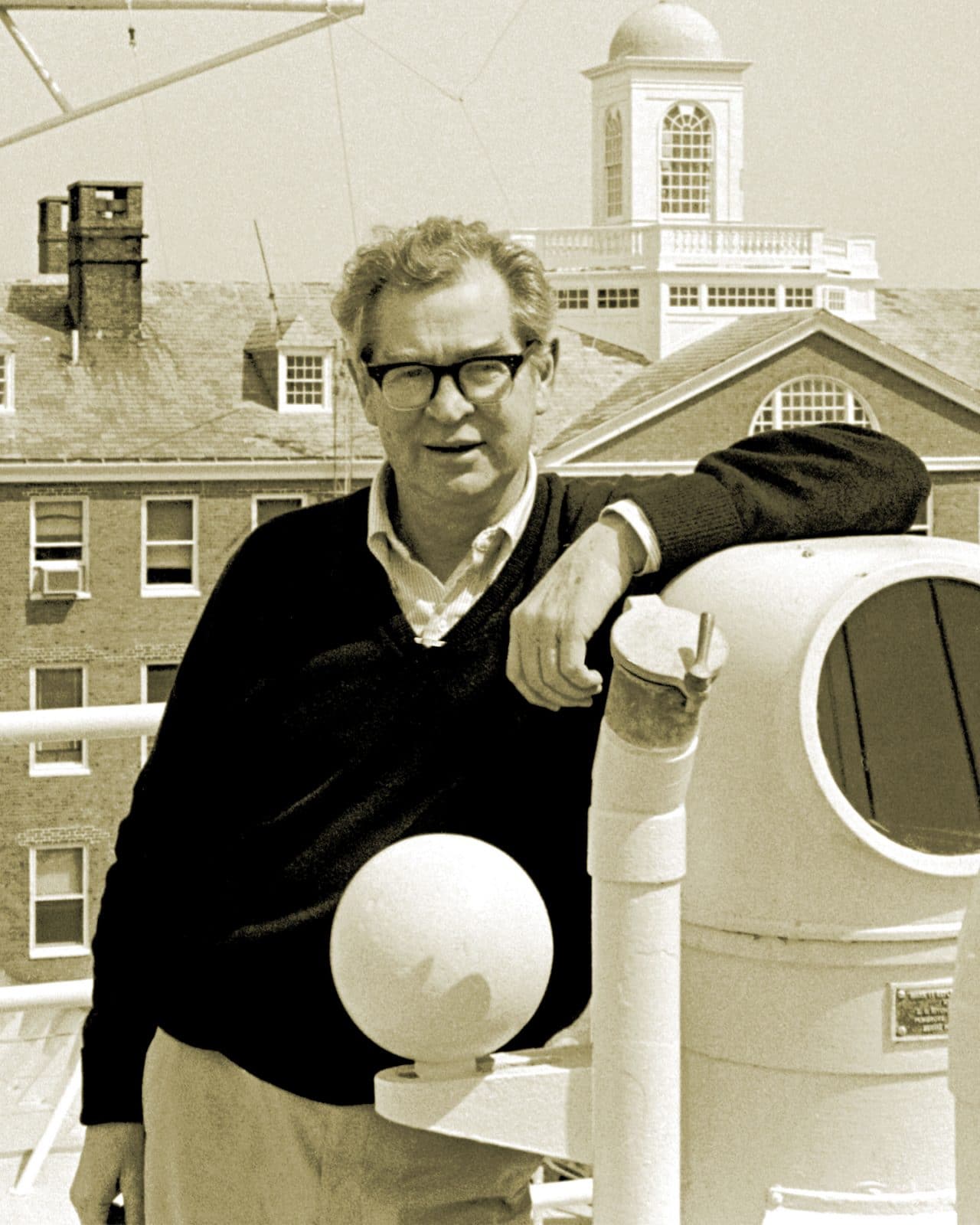John H. Steele
The Woods Hole Oceanographic Institution announces with great sorrow the death of John H. Steele at his home in Falmouth, Mass., on November 4, 2013, 11 days before his 87th birthday.
John H. Steele was director of the Woods Hole Oceanographic Institution for 12 years and was an intellectual leader of the national and international ocean science community. He was well known for his development of quantitative approaches to the study of marine ecosystems, having played a key role in creating major research programs that contribute to our knowledge of the ocean’s role in global processes.
Of Dr. Steele’s numerous and diverse accomplishments, he was most proud of his role in the broadening of biological oceanography from being essentially a descriptive science to a quantitative, mathematically based discipline. The defining moment in his career came with the publication, in 1974, of his book, The Structure of Marine Ecosystems, that spelled out his mathematical approach and demonstrated its use with actual data.
The tools that Dr. Steele developed are central to such diverse enterprises as fisheries management and predicting the ocean’s role in mitigating anthropogenic climate change.
Born in Edinburgh, Scotland, on November 15, 1926, Dr. Steele began his career studying mathematics at University College, London at the early age of 16, where his professors had to compete with incoming German rockets for the attention of their students. Upon graduation in 1946, he served in the Royal Air Force research establishment, doing research in aeronautical mechanics. After his discharge, in 1951, he answered an advertisement and found a position at the Marine Laboratory in Aberdeen, Scotland. This institution was charged with fisheries management, but Dr. Steele recognized that doing this properly required an understanding of the broader ocean environment. He was awarded a Doctor of Science degree from University College, London in 1963.
Dr. Steele’s initial accomplishments involved studying currents in the oceans in collaboration with L. Valentine Worthington of the U.S., who was measuring the flow of deep water from the Norwegian Sea into the deep North Atlantic: a critical flux that helps govern Earth’s climate. Dr. Steele’s interest quickly evolved toward understanding the processes that govern lives of the microscopic plants and animals that are the basis of all marine food webs. He led sustained measurements at Fladen Ground, in the North Sea, that allowed quantitative analysis of nutrient supplies, plant growth and animal production at a single location. He used these measurements to develop and test the mathematical quantification described in his 1974 book.
During his years at Aberdeen, Dr. Steele became involved with the idea of studying smaller systems that might embrace the processes of the broader ocean, but that were small enough to allow a complete characterization of the ecosystem. One approach to this involved measurements in Loch Ewe, on the Scottish west coast; a second, bolder approach involved the use of large, two-meter-opening, plastic bags called mesocosms floating in the ocean. About this same time, Dr. Steele’s interests broadened to embrace the entire marine ecosystem.
The success of his efforts was recognized with many honors, including receiving the Alexander Agassiz Medal from the U.S. National Academy of Sciences in 1973 and his election to Royal Society of Edinburgh in 1968, and as a Fellow of the Royal Societies of London in 1978.
During the 1950s, Dr. Steele began his long-term relation with the Woods Hole Oceanographic Institution in Massachusetts. His earliest success there, with Charles Yentsch, was an explanation of peculiar vertical distributions of microscopic plants in the ocean. These are critical because they are the base of the marine food web, playing a role similar to grass in prairie settings over land.
Dr. Steele’s ties with Woods Hole strengthened over the years until, in 1977, he became the Institution’s director, a position in which he served until 1989. He used this platform not only to enhance the Institution’s international leadership, but to serve the interests of the broader oceanographic community. Thus, he played a central role in the development of several international oceanographic projects that ultimately dealt with the ocean’s role in defining Earth’s climate. These projects incorporated ocean circulation, chemistry and biological activity.
Dr. Steele never let his scientific research lapse, even when serving as director. Following his retirement as director, he returned to a very active research career that continued until his death. He also found time to serve as a board member of several organizations, including the Bermuda Biological Station for Research (now the Bermuda Institute of Ocean Sciences), the Exxon Corporation and the Robert Wood Johnson Foundation.
Dr. Steele and his wife, Evelyn, were justly famous for their hospitality and generosity and shared a lifetime passion for boating and entertaining. Although U.S. citizens, the Steeles retained strong ties to Britain, making visits to their cottage near Aberdeen, Scotland, and spending time with their son Hugh (of Henley-on-Thames, England), daughter-in-law, Jenny, and grandsons Adam and Owen, who also spent their summers with them in Woods Hole.
A memorial service will be held at a later date. In lieu of flowers, donations may be made to the Woods Hole Oceanographic Institution, c/o The John H. Steele Endowment in Support of Postdoctoral Research, Development Office, 266 Woods Hole Rd., MS 40, Woods Hole, MA 02543.

